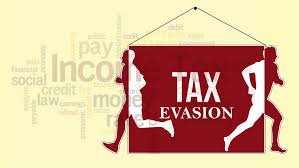When it comes to payment of taxes, direct or indirect, the picture produces an anti-climax. Tax payments to the government by Indians do not commensurate with either their income or expenditure patterns. During this year’s budget presentation, the finance minister said only 76 lakh Indians showed annual income of over Rs.5 lakh. The one-year-old GST, bringing about a major indirect tax reform, focussed on easing the process of payment and collection of indirect taxes to ensure a high tax compliance rate. A review, for Different Truths.
The population count is around 1.3 billion. The national GDP is close to $2.6 trillion. India, the world’s sixth largest economy, is growing at well over seven percent. Big spenders number nearly 250 million. The domestic air traffic growth, last year, was close to 20 per cent, a global record. Almost all popular foreign-bound airlines from India fly nearly packed-to-capacity, daily. India’s passenger car sales rose 30 percent in June. The country’s top six carmakers, which account for 90 percent of the passenger vehicle market, saw a cumulative sales growth of 43 percent. The real-estate business is booming. Mumbai and Kolkata have attracted President Donald Trump’s son to set up iconic ‘Trump Tower’ there. Rich Indian kin are buying overseas properties and migrating to richer countries in hoards. Many have bank deposits in 30-odd safe havens — from Switzerland to Panama and Cayman Islands.
However, when it comes to payment of taxes, direct or indirect, the picture produces an anti-climax. Tax payments to the government by Indians do not commensurate with either their income or expenditure patterns. During this year’s budget presentation, the finance minister said only 76 lakh Indians showed annual income of over Rs.5 lakh. The one-year-old GST, bringing about a major indirect tax reform, focussed on easing the process of payment and collection of indirect taxes to ensure a high tax compliance rate. Sadly, GST rates and slabs seem to have failed to impress many tax payers. The government’s indirect tax department has identified ‘thousands of crore rupees’ in tax leakage as it strengthens its data analytics capabilities. The GST Council has initiated analytics of a large pool of data and text gathered during the past year and released a request for proposal (RFP) for a dedicated fraud analytics work.
Unfortunately, the government does not seem to recognise the fact that high tax rates — both direct and indirect — and their arbitrarily fixed slabs are principally responsible for high incidence of tax evasion or tax avoidance by citizens and firms. There is no point in blaming chartered accountants alone for helping individuals and firms to evade tax. Every time the government reduced taxes in the past, collection and compliance levels improved. But, the government seems to be hesitant about appreciating this. The government needs to take bold enough decisions to revise the taxation levels downward and their slabs recast to improve compliance and grow the ‘white’ economy. Thanks to the high rates of both direct and indirect taxes until the 1990s, Indian firms and citizens, it would appear, were driven to take the risk of evading tax in a big way for decades and, thus, become habitual tax and financial offenders. Scratch balance sheet of any firm or income of any middle or upper class individual, a case of tax avoidance, if not evasion, will, most likely, surface.
The government’s efforts to plug holes to tackle tax evasion often met with limited success. If the direct tax yield is so poor there is no reason to be depressed about the newly introduced GST’s limited success. Recently, the indirect tax department issued notices to about 200 companies after data mining revealed that they may be guilty of evading the goods and services tax. The findings showed that these companies may be under-invoicing or selling their goods in cash to customers. Tax officials think that many companies indulge in undervaluing sales and overvaluing purchases. In the earlier tax regime, such transactions would typically go undetected as there was no mechanism to compare inputs from suppliers with sales. Under-invoicing and over-invoicing are popular methods by which most companies try to escape tax. The government had charted out sector-wise ‘risk factors’ companies might exploit to avoid paying GST. Categorisation or risk evaluation for these audits has been created by using big data analytics.
Interestingly, a recent tax notice sent to a company reads: “You have set off your tax liabilities (GST) by way of payment using input tax credit in excess of 95 per cent of the total tax liabilities…. In other words, payment of tax was less than 5%.” Similar tax notices may have been sent to several other companies as well. According to tax officials, many of the companies recorded large raw material purchases but little sales, suggesting that they may be under-billing or selling products at lower prices officially and accepting money in cash from buyers for the rest. Logically, a better GST compliance rate may even lead to a better direct tax collection from both corporates and individuals. Direct tax rates have not been lowered and rationalised for quite some time. This needs to be done without delay. The tax compliance level appears to be considerably low if compared with the lifestyle of a large section of individuals, including businessmen, entrepreneurs— big or small— and professionals such as practising doctors, lawyers and chartered accountants as well as agents and fixers of all hues.
Going by the government’s own statement, only 1.72 lakh people in the country showed income over Rs 50 lakh in 2017-18. The number does not certainly commensurate with level of individual spending and consumption. For example, the government says in the last five years, more than 1.25 crore cars had been sold. The number of Indians who flew abroad, either on business or tourism, was 2 crore in 2015. There are about 4.2 core persons employed in the organised sector, only 1.74 crore file tax returns. Of some 5.6 crore informal sector individual enterprises and firms doing small business, less than 1.82 crore file returns. Only 40 percent of the registered companies filed tax return in 2016-17. Nearly 50 percent of them showed losses or ‘zero’ income. If anything, such facts point at the government’s inability to earn citizens’ confidence in taxation policies and patterns.
Nantoo Banerjee
©IPA Service
Photo from the Internet






 By
By
